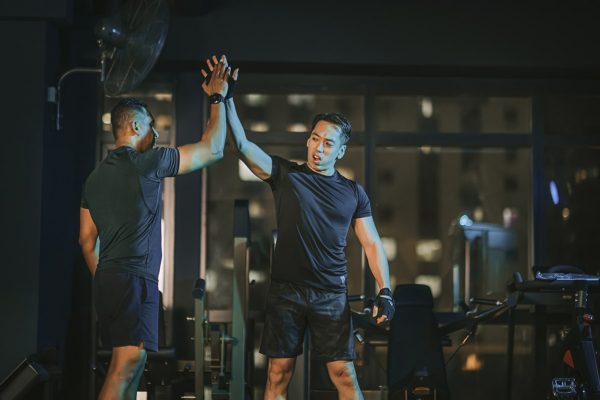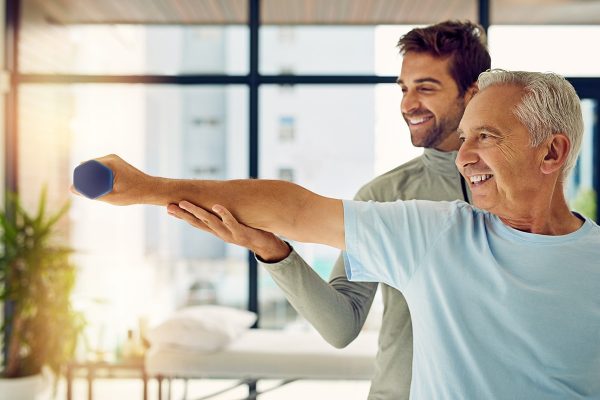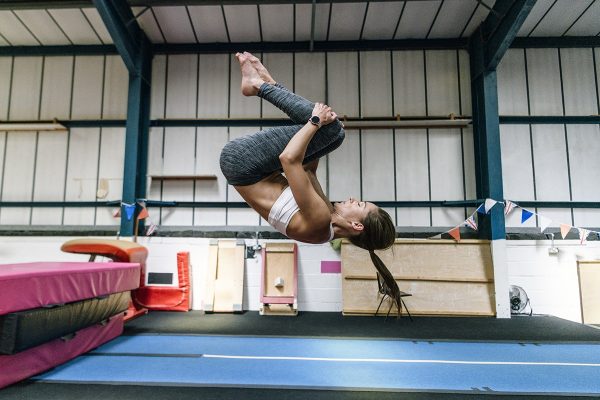
The Importance of Core Training and How to Make it Strong and Functional
The term “core” refers to the central group of muscles in the human body that are essential for maintaining stability, balance, and overall functional movement. These muscles extend beyond the commonly known “abs” and encompass various muscle groups that work in unison to support the spine and pelvis. Understanding the anatomy and function of these core muscles is crucial for developing a strong and functional core through targeted exercises. In this blog post, we will go over what makes our core and cover exercises that help build it to be functional.
Why Training Your Core is Important
A strong core plays a fundamental role in overall health, athletic performance, and daily movement. Here are some key reasons why core training is essential:
Improved Posture – A well-trained core helps maintain proper spinal alignment, reducing the risk of slouching and related musculoskeletal issues (Kibler, Press, & Sciascia, 2006).
Injury Prevention – Strengthening the core reduces the risk of lower back pain and injuries by providing better spinal support (Hibbs, Thompson, French, Wrigley, & Spears, 2008).
Enhanced Athletic Performance – Many sports require core strength for explosive movements, balance, and stability, making core training essential for athletes (Reed, Ford, Myer, & Hewett, 2012).
Better Functional Movement – A strong core enhances everyday activities such as bending, lifting, and reaching, making movement more efficient and reducing strain on other muscle groups (Willardson, 2007).
Anatomy and Function of the Core Muscles
The core is composed of several key muscle groups, including:
Rectus Abdominis: Commonly referred to as the “six-pack” muscles, these run vertically along the front of the abdomen and are primarily responsible for flexing the lumbar spine.
Transverse Abdominis: A deep muscle that acts like a corset, providing stability to the spine and pelvis.
Internal and External Obliques: Located on the sides of the abdomen, these muscles aid in trunk rotation and lateral flexion.
Erector Spinae: A group of muscles running along the spine that assist in extending and stabilizing the vertebral column.
Multifidus: Deep muscles that support spinal stability and posture.
Diaphragm: The primary muscle used in breathing, which also plays a role in core stability.
Pelvic Floor Muscles: These support the pelvic organs and contribute to core stability.
These muscles work together to help maintain posture and keep your spine stable throughout everyday life! It is important that these muscles work in conjunction with one another as opposed to only one strong area. Otherwise, we would see muscle strength discrepancy and a higher injury risk to surrounding structures.
Building a Strong and Functional Core Through Exercise
Now that we understand the importance of core function… how do we make it stronger? Developing a functional core involves engaging in exercises that target these muscle groups effectively.
Incorporating a variety of movements ensures comprehensive strengthening and functionality. We want to target the core in different planes of motion to help build a well-rounded structure for everyday use. Below are some examples of exercises designed to enhance multi-directional core strength:
Planks
How to perform: Begin in a forearm plank position with elbows aligned under shoulders
and body forming a straight line from head to heels. Hold this position, ensuring the core is engaged and the back remains flat.
Benefits: Enhances stability and endurance of the core muscles.
Common mistakes: Allowing the hips to sag or rise too high, which can reduce effectiveness
and strain the lower back.
Side Planks
How to perform: Lie on one side with legs extended and stacked. Prop up the body on the forearm, ensuring the elbow is directly under the shoulder. Lift the hips to form a straight line from head to feet. Hold this position, then repeat on the other side.
Benefits: Strengthens the obliques and enhances shoulder stability.
Common mistakes: Letting the hips drop or rotating the torso forward or backward.
Dead Bugs
How to perform: Lie on your back with arms extended toward the ceiling and knees bent at 90 degrees. Slowly lower the right arm and left leg toward the floor while keeping the lower back pressed into the ground. Return to the starting position and repeat on the opposite side.
Benefits: Enhances core stability and coordination between opposing limbs.
Common mistakes: Allowing the lower back to arch or moving too quickly without control.
Bird Dogs
How to perform: Start on all fours with hands under shoulders and knees under hips. Extend the right arm forward and left leg backward, keeping the hips level. Hold briefly, then return to the starting position and repeat on the other side.
Benefits: Strengthens the erector spinae, abdominals, and glutes while enhancing balance.
Common mistakes: Rotating the hips or arching the back excessively.
Pallof Press + Twists
How to perform: Anchor a long band to a bar/post while facing parallel to the anchor. Hold the free end of the band with both hands and press in front of chest. Twist away from the anchor to further stretch the band, pause, then return to hands pressed position facing forwards.
Benefits: Enhances rotational strength and engages the obliques.
Common mistakes: Rounding the back or using momentum rather than controlled movements.
Integrating Core Exercises into Your Routine
Like any exercise, it is important to regularly program core movements into your routine. To effectively build a strong and functional core, consider incorporating core exercises into your fitness routine at least 2-3 times per week. Gradually increase the intensity and complexity of exercises as your core strength improves. As outlined above, you want to include a mix of static (isometric) and dynamic movements to engage different muscle groups and build functionality. Incorporate exercises that mimic daily activities to improve real-life functional strength. As always, focus on maintaining proper form to maximize benefits and reduce the risk of injury.
By understanding the anatomy and function of your core muscles and engaging in targeted exercises, you can develop a strong and functional core that supports overall health, enhances physical performance, and reduces the risk of injury.
How We Can Help
Working with exercise professionals, such as kinesiologists or certified trainers, can ensure that you execute exercises with proper form and alignment. Professional guidance reduces injury risk and maximizes effectiveness.
At CARESPACE, we are focused on a holistic approach to health and helping clients like YOU reach your individual health goals.
Whether you’re new to exercise or looking to optimize your routine, our team of kinesiologists and fitness trainers can help you incorporate flexibility, range of motion training, and other physical activities your lifestyle safely and effectively.
Call or book online today to learn more about how we can support you in reaching your health and fitness goals!
For further information on treatment options, explore fitness training at CARESPACE.
References
Hibbs, A. E., Thompson, K. G., French, D., Wrigley, A., & Spears, I. (2008). Optimizing performance by improving core stability and strength. Sports Medicine, 38(12), 995-1008. https://doi.org/10.2165/00007256-200838120-00004
Kibler, W. B., Press, J., & Sciascia, A. (2006). The role of core stability in athletic function.
Sports Medicine, 36(3), 189-198. https://doi.org/10.2165/00007256-200636030-00001
Reed, C. A., Ford, K. R., Myer, G. D., & Hewett, T. E. (2012). The effects of isolated and integrated ‘core stability’ training on athletic performance measures.
Sports Medicine, 42(8), 705-722. https://doi.org/10.2165/11631350-000000000-00000
Willardson, J. M. (2007). Core stability training: Applications to sports conditioning programs.
Journal of Strength and Conditioning Research, 21(3), 979-985. https://doi.org/10.1519/R-20235.1




